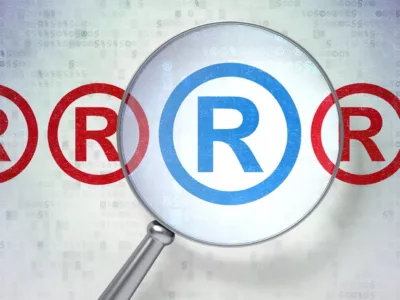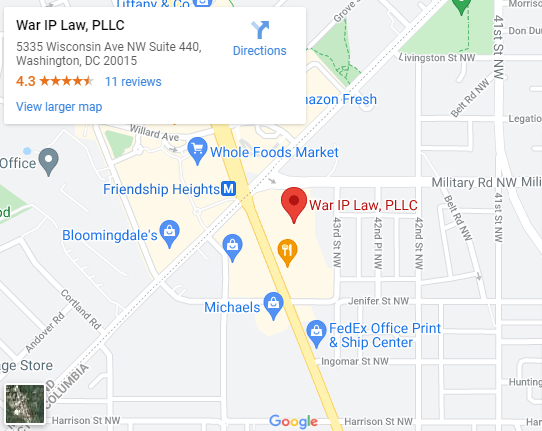The process of filing a trademark begins with an application to the United States Patent and Trademark Office (USPTO). Once the application is published, a 30-day opposition period begins, during which time anyone who believes the trademark could damage their business may file a formal opposition. In recent years, there has been a huge increase in the number of trademark applications — the USPTO reports that there were 92,608 trademark applications in December 2020, a 172% increase compared to the same month the year before. This increase in applications means there is a higher chance you may need to file a trademark opposition. For support with the process, contact the experienced intellectual property attorneys at War IP Law, PLLC, at (202) 800-3754.
How the USPTO Oftentimes Prevents the Need for Trademark Opposition

The examining attorneys at the USPTO review all applications as part of the approval process. This involves comparing the new trademark to active trademarks and blocking any that are too similar to those already on the federal register. However, as examining attorneys need to base their decisions purely on existing registrations and have limited time to come to an opinion, some still slip through the cracks.
Grounds for a Trademark Opposition
Only opposers with specific reasons are entitled to file a trademark opposition. The main reason for a new trademark is that a similar one already exists and consumers could be confused. However, opposers do sometimes cite other reasons, including:
- The trademark is a surname.
- Based on the types of goods or services the applicant wishes to sell, the trademark is insufficiently distinct. This can be because it is either a generic or a descriptive term, which includes geographically descriptive and misdescriptive terms.
- The trademark relates to something functional for products or services of this type.
- Registration will blur or dilute the opposer’s famous trademark.
- The applicant has no intentions of using the trademark in commerce.
- The trademark suggests a nonexistent connection, sponsorship, or origin.
In all the above, opposers must believe that the registration of the new trademark will cause them damage, as defined by the Trademark Act § 13(a), 15 U.S.C. § 1063(a).
Who Can File a Trademark Opposition?
Opposers must also have a legitimate interest in the trademark registration, meaning the new trademark must impact them directly. In other words, trademark oppositions are not open to people offended by the trademark, nor can anyone use the process as a tactic to hurt a competitor’s business.
Furthermore, opposers must demonstrate standing (also called entitlement to a statutory cause of action). This usually involves opposers proving that the application would damage their own trademark rights. Opposers who want to claim that an application would blur or dilute their trademark also need to prove that they meet a standard of fame. Succeeding with such a claim, though, may mean they receive greater protections and have a lower need for similarity with the new trademark.
The Trademark Opposition Process
A trademark opposition must begin within 30 days of when the opposition period is open. It involves a number of steps.
- Filing an Extension. Filing an extension of time to oppose gives the opposer an extra 30 days (no fee) or 90 days ($200 fee). This gives the opposer the chance to discuss the case with a trademark attorney. However, this step is not essential — it is also possible to immediately file an opposition. To gain legal counsel for the process, contact the dedicated intellectual property attorneys at War IP Law, PLLC.
- Sending a Notice of Opposition. Opposers need to file through the Trademark Trial and Appeal Board (TTAB) by sending a Notice of Opposition. This short document summarizes the claims, states at least one ground for opposition, and proves to stand. It has a cost of $600 per class per opposer.
- Awaiting the Applicant’s Response. The applicant has 40 days to respond to the trademark opposition, either by filing a motion to dismiss (which leads to suspension until the TTAB makes a ruling) or by filing an answer. If the applicant fails to respond within a 40-day period, the trademark application is abandoned.
- Submitting Evidence and Making Arguments. Parties in a trademark opposition case can expect the process to take up to three years or more. The stages in this process are:
- Discovery. The two parties have a conference to discuss discovery and request information from each other, including interrogatories, requests for admission, and other documentation. There may also be witness depositions and expert testimony.
- Testimony. The opposer must submit all the evidence within 30 days. Following this, the applicant has 30 days to submit evidence. The opposer then has 15 days to provide a rebuttal.
- Trial briefs. Filing trial briefs follows the same pattern as testimony.
- Oral arguments. Either side is entitled to present an oral argument, although this is not a requirement.
- Issuing a Decision. Finally, the TTAB will issue a decision, usually within six months. If the applicant wins, the trademark continues through the application process. If the opposer wins, the application is abandoned. Neither party can receive financial compensation through the TTAB.
The Opposition Window
It is possible to prevent the publishing of a trademark application from happening at all. A trademark holder can send a letter of protest to the examining attorney on the application and the examining attorney will use this information when reviewing the application. Since the opposer will receive no communication with the examining attorney, it is still necessary to wait to see if the application is approved. If it is, the trademark owner can consider taking further action through a trademark opposition.
Once the 30-day opposition window is closed, however, there is no opportunity to oppose a trademark. The only course of action for trademark holders who miss this window is to wait for the trademark to register and file a trademark cancellation.
Contact an Experienced Trademark Lawyer To Learn More About Your Legal Rights
If you would like to file a trademark opposition, you will need to go through the formal proceedings before the Trademark Trial and Appeal Board (the TTAB) which is an administrative court. A knowledgeable trademark attorney will be familiar with the procedure, the requirements to file, and the possible risks. Receive advice for your case by contacting War IP Law, PLLC, at (202) 800-3754.






